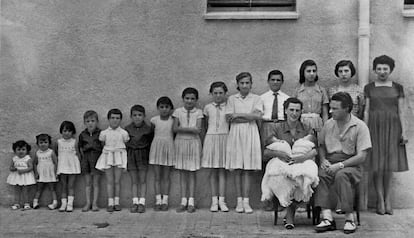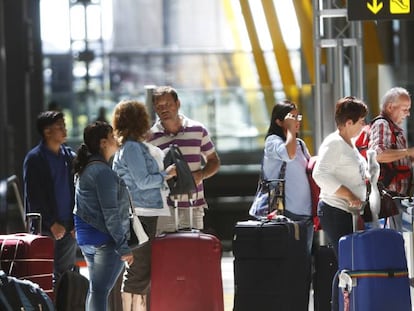Spanish Catholic Church loses its influence over naming customs
The birth register shows many fewer children named José, Jesús or after representations of the Virgin Mary

With the Catholic Church’s influence increasingly diluted, Spain is no longer naming its baby girls after representations of the Virgin Mary or using José and Jesús for little boys, according to a recent survey by the state-funded Spanish National Research Council (CSIC).
Nine of the 10 most popular names for girls during the 1960s included Mary in them – María del Carmen, Ana María, María Dolores, María del Pilar, María José, María Teresa, María Ángeles, María Isabel and Rosa María. Together with Isabel, they were used to christen 21% of newborn girls.

In the first decade of the 21st century, María hung onto its position at the top of the charts but the remaining nine names had no association with the mother of Christ – Lucía, Paula, Laura, Marta, Alba, Sara, Andrea, Claudia and Carla.
“Shortly before the beginning of the baby boom in the 1960s, Pope Pius XII had issued his encyclical Caeli Reginam (1954), which he dedicated to the Virgin Mary,” explains one of the analysts of the survey headed by Antonio Abellán from the Institute of Economy, Geography and Demographics from the CSIC. “One of the theories explaining the proliferation of the name María is that his encyclical would have inspired bishops and local priests, whose enthusiasm affected all the girls who were christened, which was everyone at that time. The parents would have come with the idea of christening their daughter Pilar and the priest would have persuaded them to call her María Pilar. They wielded a certain influence or had the power to impose,” says Abellán.
This study also revealed that, for boys, the names José and Jesús are gradually disappearing – names that, in the 1930s, took first and 10th place, respectively, among Spaniards. For every 100 baby boys born, nine were christened José. This century, the 10 most popular boy’s names are Alejandro, Daniel, Pablo, David, Adrián, Álvaro, Javier, Sergio, Carlos and Iván.
The study revealed that, for boys, the names José and Jesús are gradually disappearing
“The Church’s influence has diminished,” says Abellán.
The analysts point out that “the most popular names among our grandfathers were more frequently used than the most popular names among our grandmothers.”
In the 1930s, the 10 most common names were used for 40% of all boys while the same applied to only 29% of girls.
This phenomenon probably reflects the fact that “the male represented the continuity of the family; the property and business, and so on, which means the name was less likely to vary,” according to Isabel Fernández Morales, also from the Institute of Economy, Geography and Demographics,
In the 21st century, however, this tendency has been reversed with 22% of girls receiving the 10 most popular names as opposed to 20% of boys.
English version by Heather Galloway.
Tu suscripción se está usando en otro dispositivo
¿Quieres añadir otro usuario a tu suscripción?
Si continúas leyendo en este dispositivo, no se podrá leer en el otro.
FlechaTu suscripción se está usando en otro dispositivo y solo puedes acceder a EL PAÍS desde un dispositivo a la vez.
Si quieres compartir tu cuenta, cambia tu suscripción a la modalidad Premium, así podrás añadir otro usuario. Cada uno accederá con su propia cuenta de email, lo que os permitirá personalizar vuestra experiencia en EL PAÍS.
¿Tienes una suscripción de empresa? Accede aquí para contratar más cuentas.
En el caso de no saber quién está usando tu cuenta, te recomendamos cambiar tu contraseña aquí.
Si decides continuar compartiendo tu cuenta, este mensaje se mostrará en tu dispositivo y en el de la otra persona que está usando tu cuenta de forma indefinida, afectando a tu experiencia de lectura. Puedes consultar aquí los términos y condiciones de la suscripción digital.











































